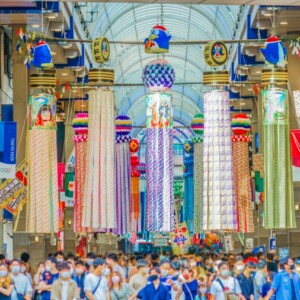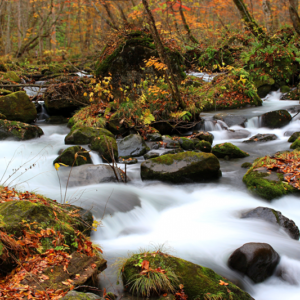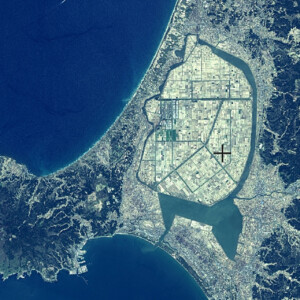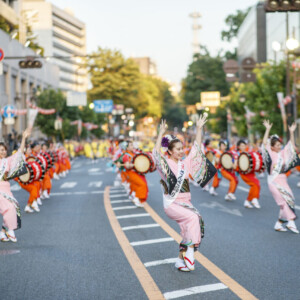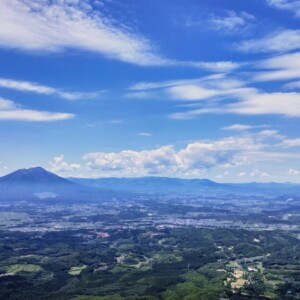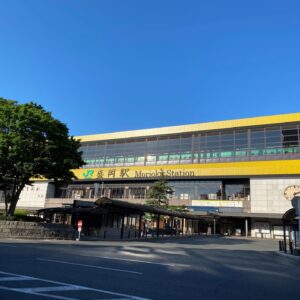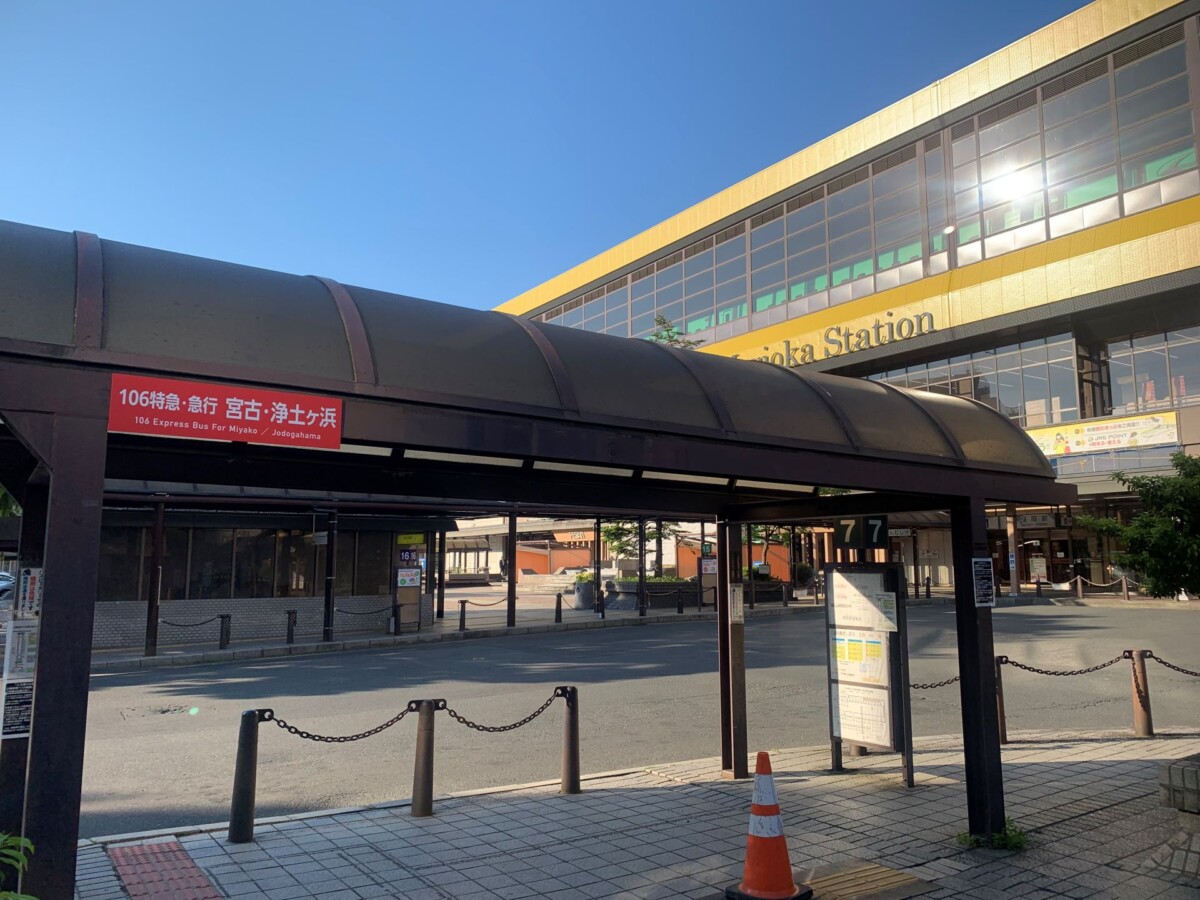
After 40 years of competition, the local railroad and bus routes between Morioka and Miyako will now coexist! [Iwate Prefecture]
table of contents
- 1 JR Yamada Line: The "Eastern Yokozuna" of local lines is a massively unprofitable line
- 2 Iwate Kenhoku Bus "106 Express Bus" - A new means of transportation born from motorization
- 3 Railway vs. bus: a history of competition
- 4 What is the demonstration experiment that explores the possibility of coexistence?
- 5 What are the advantages and disadvantages of trains and buses that can be considered in the demonstration experiment?
- 6 summary
For 45 years, JR East's Yamada Line and Iwate Kenhoku Bus's 106 Limited Express/Express Bus, , have been competing public transportation services connecting Morioka City, the capital of Iwate Prefecture, and Miyako City, the core city of Sanriku.
There is now a movement for these two public transportation systems to cooperate and coexist
An experiment that allows passengers to use JR Yamada Line tickets to ride buses will be carried out for one year from April 1, 2024 to March 31, 2025, and nearly two months have passed since it began
In this article, we will introduce the history and background leading up to the demonstration experiment, as well as details of the experiment and future prospects
JR Yamada Line: The "Eastern Yokozuna" of local lines is a massively unprofitable line
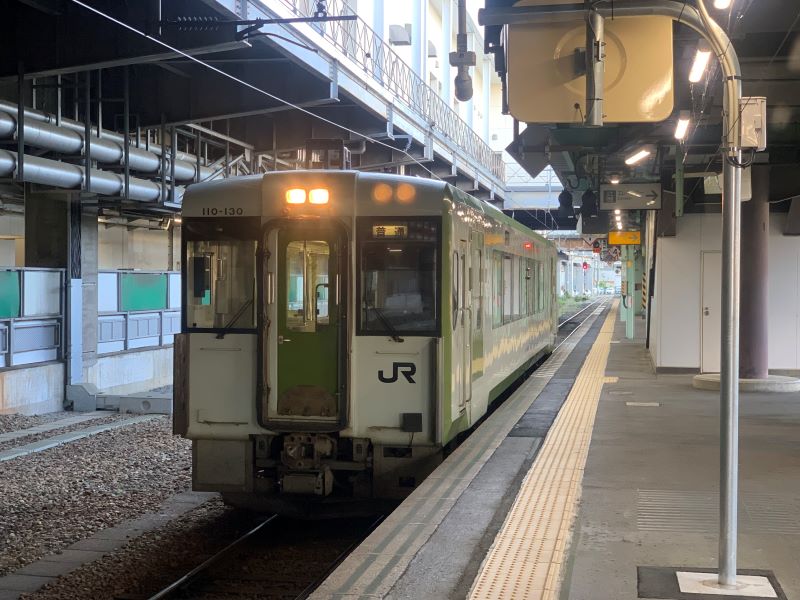
When it first opened, it was named after the route that connected Morioka City, Miyako City, and Yamada Town. Its history began in 1920 when the decision to build it was made when Hara Takashi, a native of Iwate Prefecture, became Prime Minister
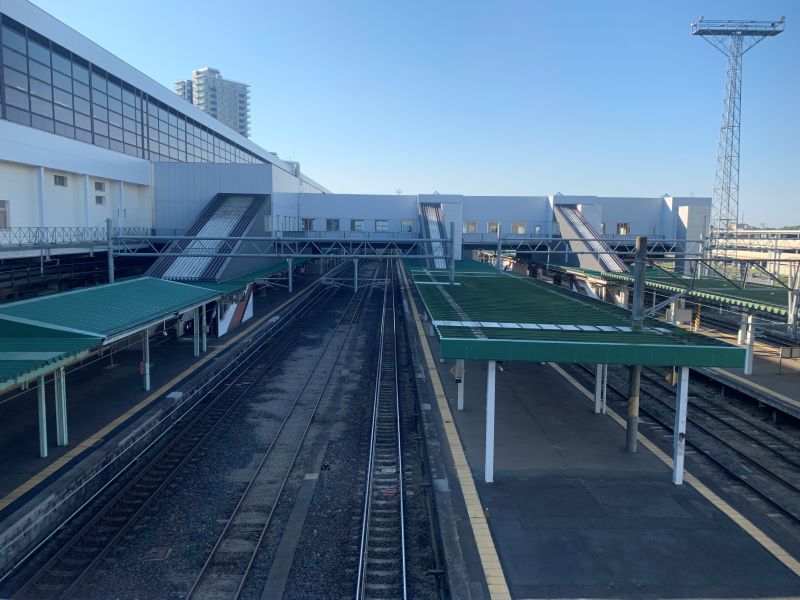
It was opened by 1935, and in 1939 it was extended from Yamada-cho to Kamaishi City, contributing to the transportation of both passengers and cargo as a railway line that transported iron and other resources from the Kamaishi Steel Works and Kamaishi Mine directly to the Tohoku Main Line
However, after the Pacific War, when the Kamaishi Line connecting Hanamaki City and Kamaishi City was opened, it lost its position as the main freight route connecting inland Iwate and Kamaishi City
Recovery from the Great East Japan Earthquake
In the Great East Japan Earthquake on March 11, 2011, 21.7 km of the 55.4 km coastal line between Miyako and Kamaishi was flooded by the tsunami, washing away 10% of the track, destroying four stations and six railway bridges, and causing embankments to collapse in 10 places
The introduction of BRT was considered at one point due to the difficulty of restoring the line, but there was already a bus route connecting the two cities on National Route 45, which runs north and south along the Sanriku coast, and there was strong local demand for the railway to be restored, so moves were made to restore the rail line
The affected line was transferred to Sanriku Railway
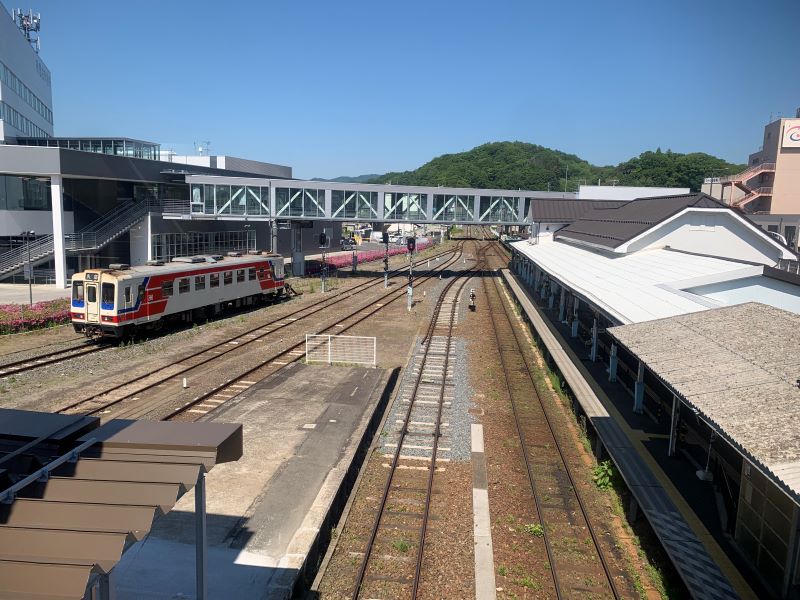
In 2014, JR East announced that it would cover 14 billion yen of the 21 billion yen restoration cost to restore the tracks and station buildings, and then transfer management of the line to Sanriku Railway and the four cities and towns along the affected line free of charge
As a result, the Yamada Line became a local line connecting Morioka City and Miyako City, and the Sanriku Railway, which had previously been divided into two lines north of Miyako City and south of Kamaishi City, was now connected as a single line from Kuji City to Kamaishi City
Current status of the JR Yamada Line
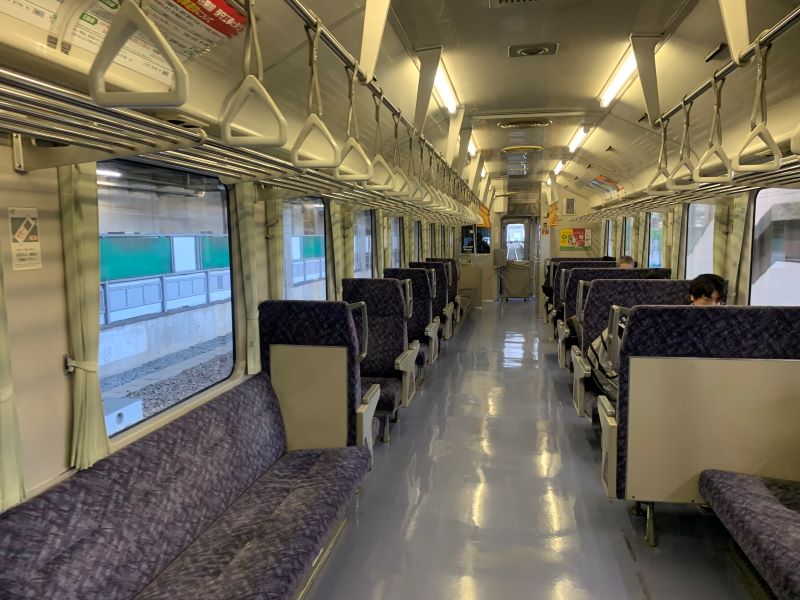
There are few direct trains that run the entire route, with only two round trips on weekdays (one round trip during the off-season)
On Saturdays and holidays, the Rapid Rias service runs, but even then it only makes four round trips, and the Sanriku Train Miyako is in operation, it only makes five round trips a day, making it a quiet local line.
In addition, local trains for school and work commuters operate between Morioka Station and Kamimai Station, between Kawauchi Station and Miyako Station, and between Moichi Station and Miyako Station
Iwate Kenhoku Bus "106 Express Bus" - A new means of transportation born from motorization
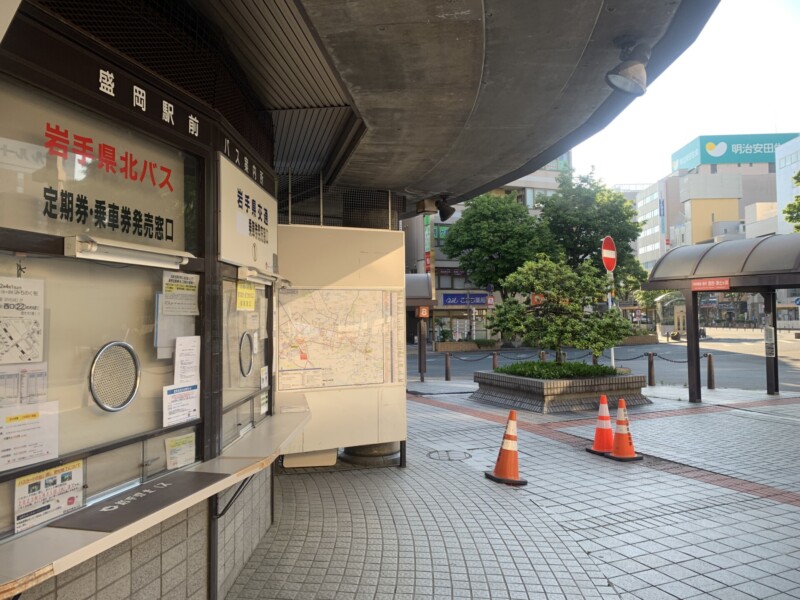
the "106 Express Bus," began operating on November 1, 1978 (Showa 53) as a route bus running on National Route 106 (Hei Kaido) connecting Morioka City and Miyako City the "106 Limited Express Bus" was introduced in 1987.
With the development of a car-oriented society after the war, National Route 106 was renovated to make it easier to travel on, and this was the impetus for Iwate Kenhoku Bus to start operating this route bus with the concept of being "faster than the train and more comfortable than a private car."
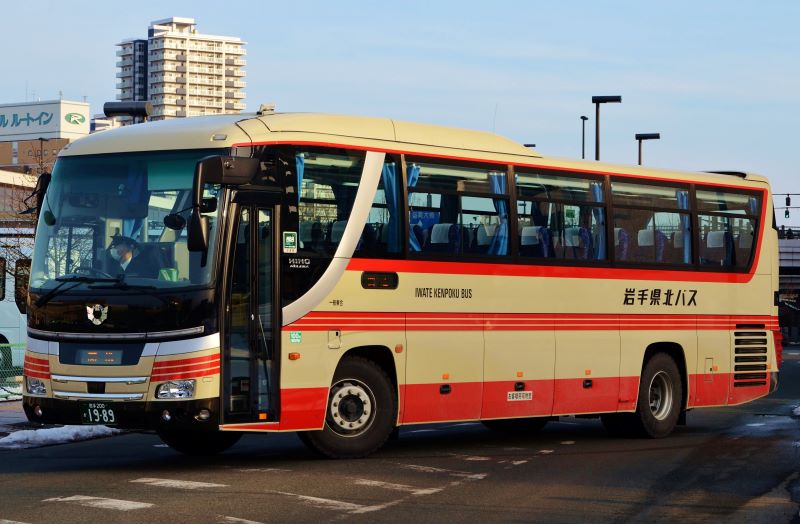
The latest tourist buses are used, with reclining seats, air conditioning and heating, and on-board televisions. Combined with fares comparable to those of trains, the comfort and convenience of these buses is attracting passengers to the JR Yamada Line
There are also two round trip express buses that run from Miyako to Yamada
Railway vs. bus: a history of competition
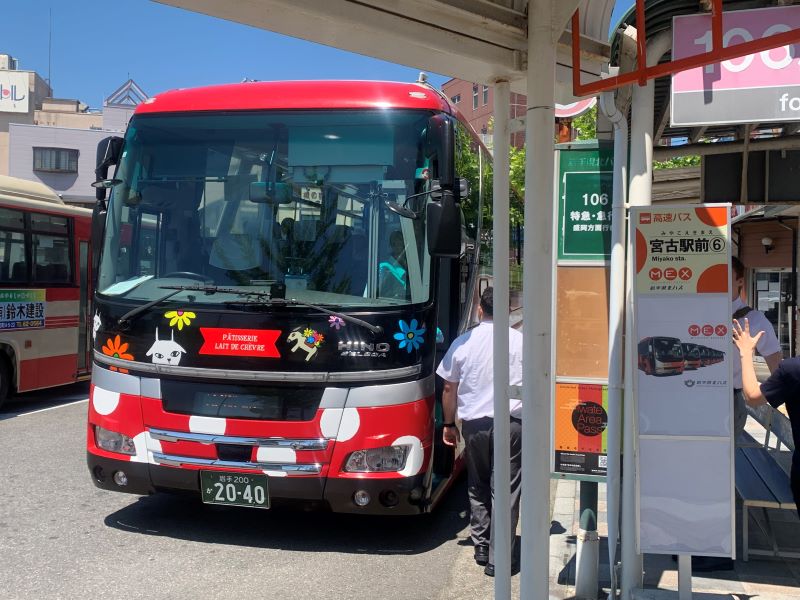
The 106 Express Bus was not only comfortable, but also offered services such as connecting with the Blue Train and night trains that departed and arrived at Morioka Station at the time, and adding more vehicles to guarantee passengers when there were a large number of passengers
They also offer wrapped buses in collaboration with restaurants and other businesses, and have continued to provide similar services even after the Tohoku Shinkansen opened, and their convenience has led to an increase in the number of users

the reconstruction support road section of the Miyako-Morioka Crossing Road on April 1, 2021 , travel time was reduced by approximately 40 minutes, and the Morioka-Miyako route on the 106 Express Bus was shortened to approximately 2 hours and 15 minutes.
This is slightly shorter than the JR Yamada Line local train, which takes about 2 hours and 30 minutes, and the 106 Express Bus takes just 1 hour and 40 minutes, making it an important form of public transportation connecting Morioka and Miyako in an even shorter time
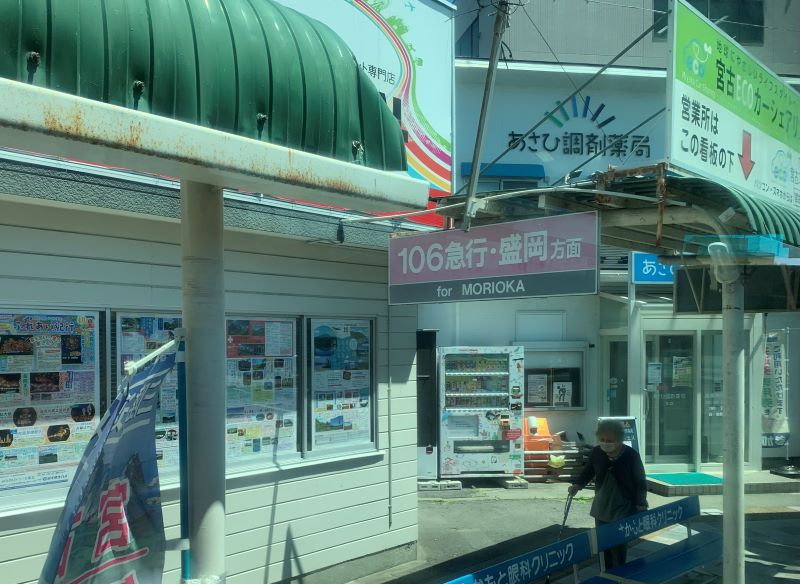
As of May 2024, there are seven express bus round trips and five express bus round trips running daily (seven express bus round trips and three express bus round trips on Saturdays and holidays), which is far more frequent than the Yamada Line, and some are saying that the fate of the Yamada Line is hanging by a thread
What is the demonstration experiment that explores the possibility of coexistence?

The current demonstration experiment will allow passengers to ride the bus using a valid JR ticket (commuter passes and multiple-ride tickets are accepted, excluding discount tickets such as the Seishun 18 Kippu) for the Morioka-Miyako section from April 1, 2024 .
The fare structure for each service will remain the same, so as of May 2024, JR will cost 1,980 yen while bus fares will cost 2,000 to 2,200 yen, meaning you can save up to 220 yen by buying a JR ticket
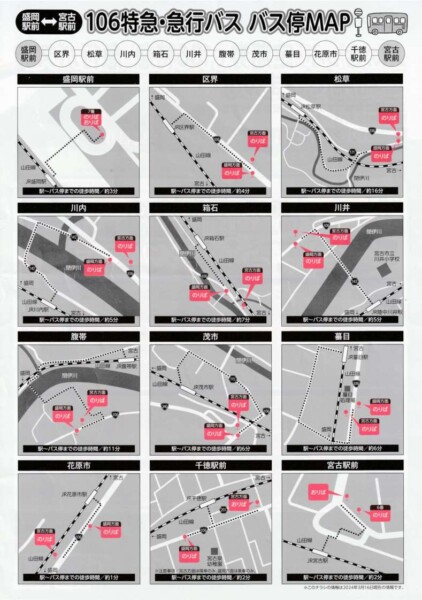
Additionally, because the JR line between Morioka and Miyako is over 101km long, passengers are allowed to get off along the way, and this also applies to buses; passengers can get off and board buses along the way at bus stops in the shared area by showing their ticket to the driver, but they cannot get off or board buses along the way between Morioka and Kuzakai
Also, bus tickets cannot be used to board JR trains, and bus route fares will apply if you board a bus en route
What are the advantages and disadvantages of trains and buses that can be considered in the demonstration experiment?
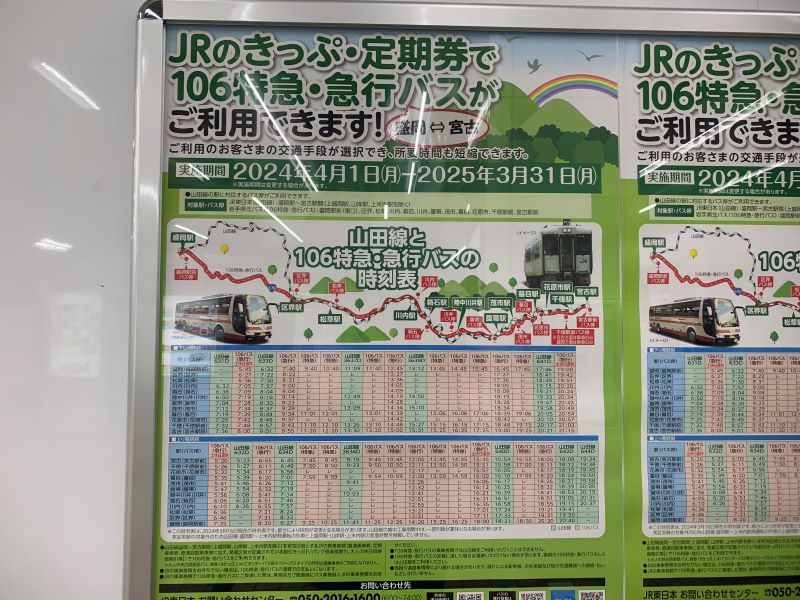
Flyers distributed at Morioka Station and other locations include timetables that combine both the Yamada Line and the 106 Limited Express/Express Bus, meaning the increased frequency has been achieved at no cost to either company
Increasing the number of services would improve convenience for passengers and would be a major benefit in attracting more passengers who travel by private car, but this demonstration experiment only applies to JR tickets
As a result, some believe that Iwate Kenhoku Bus may actually see a decrease in revenue
However, in recent years, the number of bus passengers has been decreasing due to the completion of roads that have reduced bus travel times, and Iwate Kenhoku Bus is no exception to the driver shortage caused by the 2024 problem
It cannot be denied that there is a possibility that service will be reduced in the future due to a shortage of drivers, but some believe that if the Yamada Line, which has become more profitable, increases its service, the two lines will be able to compensate for each other
Information
- JR East Official Website
- JR East News (Regarding the implementation of a demonstration experiment aimed at improving convenience on the Yamada Line)
- Iwate Kenhoku Bus Official Website
- Regarding boarding and disembarking the 106 express and express buses using JR Yamada Line tickets (Iwate Kenhoku Bus official website)
summary
A rare demonstration experiment has begun in Japan to see trains and buses coexist on almost the same route
The JR Yamada Line, known as the "yokozuna of the east" among local railway enthusiasts, has been experiencing a rapid decline in passenger numbers, making it a highly unprofitable line and putting its survival at risk. However, depending on the results of this experiment, it may be possible to open up a path to coexistence with Iwate Kenhoku Bus
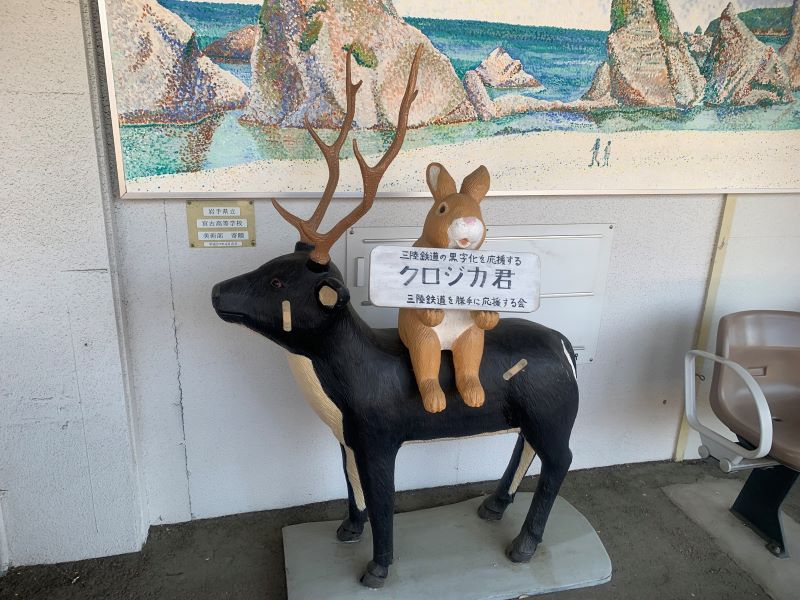
Unprofitable JR lines are being abolished one after another all over Japan, and there is a saying that "areas that lose their railways will decline."
Iwate Prefecture has already abolished many local lines, and there are still many unprofitable lines, including the Yamada Line, and if this statement is true, abolishing these lines could further decrease the prefecture's population
We sincerely hope that this demonstration experiment will produce positive results in order to protect the Yamada Line
In the next article, we will introduce an article about our actual participation in a demonstration experiment aimed at the coexistence and prosperity of local railways and route buses between Morioka and Miyako
We will provide you with more realistic information on convenience and whether coexistence and co-prosperity are possible


![7 long-established cafes in Morioka City! Let's spend time surrounded by the Showa era scent [Iwate Prefecture] coffee shop](https://jp.neft.asia/wp-content/uploads/2023/06/61d856417cd218fa82cebfde67f83a2d-150x150.jpg)

![[Iwate Prefecture] I participated in a demonstration experiment that allows you to ride the Yamada Line and 106 Express and Express Buses with a JR ticket! I took the Yamada Line](https://jp.neft.asia/wp-content/uploads/2024/05/390b94efa208e4dca5e85ade7dcb3100-150x150.jpg)
![[Tono, Iwate Prefecture] “Tono Monogatari no Yakata” allows you to experience old tales for yourself! Let's explore the hometown of monsters on a rental bicycle 205+Tono City_Toono Story House⑤_(Winter)](https://jp.neft.asia/wp-content/uploads/2018/11/d0c9879bf06d2bd9264d631e0fc08553-150x150.jpg)
![[Tsuruoka City, Yamagata Prefecture] Is the hot spring right in front of the sea? Have the best summer by swimming and soaking in the hot springs at Yunohama Onsen! 4012080_m](https://jp.neft.asia/wp-content/uploads/2022/08/4012080_m-150x150.jpg)
![The Yamada Line's path was asked, "Are you planning to ride a monkey?" [Iwate Prefecture] 00001963-6](https://jp.neft.asia/wp-content/uploads/2024/12/00001963-6-150x150.jpg)
![[Inawashiro Town, Fukushima Prefecture] “Tenkyokaku” is a Western-style building loved by the imperial family! Let's wear a Meiji dress and become a lady! illumination](https://jp.neft.asia/wp-content/uploads/2018/08/2d9ed840da1aa01217172f486b7988c0_s-150x150.jpg)
![[Kitakata, Fukushima Prefecture] Kitakata, where the water is delicious, not only has ramen but also a lot of delicious sake! Introducing recommended sake breweries 23435785_m](https://jp.neft.asia/wp-content/uploads/2022/06/23435785_m-150x150.jpg)
